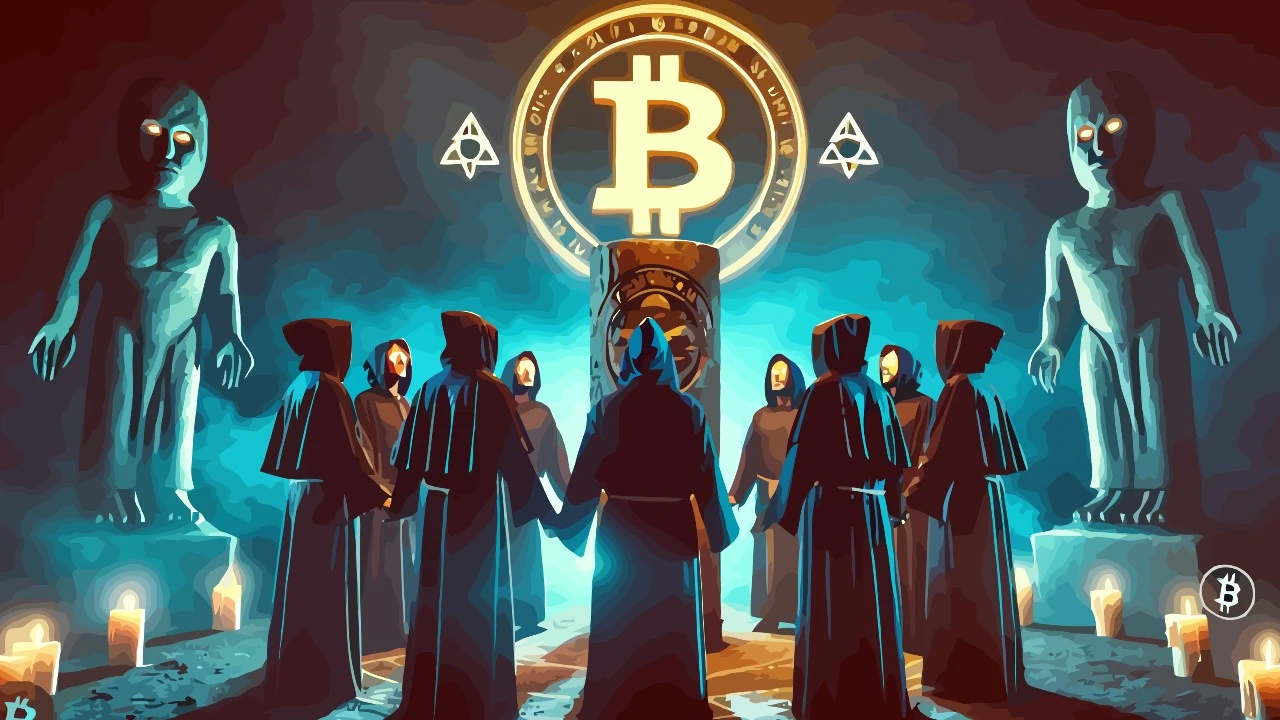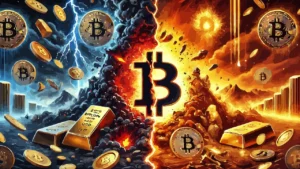Cryptocurrencies are undoubtedly one of the most revolutionary phenomena of the last decade. Born as a response to the centralization of money and the control of central banks, these digital currencies have quickly conquered the collective imagination.
However, as their popularity has grown, a dark side has emerged, a mix of fanaticism, toxicity and behavior that often borders on religious cultism.
This article will touch on the social and cultural dynamics that have made cryptocurrencies not only a financial instrument, but also a breeding ground for irrational and polarizing behavior.
Contents
#1. Mocking those with opposing views
In the world of cryptocurrencies, public opinion is strongly polarized. On one side there are the ardent supporters, on the other the critics who warn about the risks and speculative bubbles. The Internet, and in particular social networks, has become an arena of open conflict. Anyone who dares to criticize cryptocurrencies is often labeled as “ignorant”, “retrograde”, “enemy of economic freedom” and in the most extreme cases with a series of insults.
This attitude manifests itself through memes, derogatory comments, and outright ridicule campaigns. For example, those who express doubts about the sustainability of Bitcoin are mocked with terms such as “nocoiner,” used in a derogatory way to indicate those who do not own cryptocurrencies. This type of polarizing language fuels a narrative in which doubt and debate are seen as weaknesses, rather than essential elements of constructive discussion.
#2. Provocative and emotional images
A distinctive element of cryptocurrency culture is the massive use of symbolic and provocative images. Eyes with red lasers, for example, have become an emblem of the “true believer”. Anyone who adds this image to their social profile openly declares themselves a supporter of the cause, often with a defiant attitude towards anyone who dares to question cryptocurrencies.
These images aim at emotion, evoking power, vision and a sort of invincibility. Furthermore, they also serve to create a sense of exclusive belonging, almost like a secret society like the Carboneria or the Masons.
The psychology behind these images is simple: they reinforce the group’s identity and create a psychological barrier against external criticism. However, this dynamic risks turning the movement into an “echo chamber” in which dissenting voices are systematically ignored.
#3. Slogan: “Have fun staying poor”
Among the most emblematic phrases circulating in the cryptocurrency community, “have fun staying poor” stands out for its provocative and derisive tone. This slogan is often directed at those who do not invest in cryptocurrencies, implying that the choice not to participate in the market will inevitably lead to a condition of poverty or financial failure.
While it may initially seem like a simple joke, this phrase reflects a deeper and more problematic mindset. On the one hand, it ridicules those who choose not to invest, on the other, it fuels a narrative that cryptocurrencies are the only path to wealth and success.
This type of rhetoric further polarizes the debate and creates social pressure that pushes people to invest not out of conviction, but out of fear of being left behind.
#4. Dark cult behavior
Cryptocurrency communities, especially those most active on social media, often exhibit dynamics reminiscent of religious cults. Unconditional support for certain cryptocurrencies , adoration for charismatic figures, and an inability to tolerate criticism are all signs of quasi-cult behavior.
A distinctive feature of these communities is the lack of debate. Anyone who dares to question the dominant narrative is immediately attacked, often with personal insults. This creates a toxic environment in which the only goal is to reinforce the collective belief, to the detriment of rationality and discussion.
#5. The ones like Musk and Saylor
A central role in reinforcing this cult dynamic is played by charismatic figures like Elon Musk and Michael Saylor. These figures, with their massive social media followings, have helped create a highly polarized narrative around cryptocurrencies.
Elon Musk, for example, has repeatedly influenced the market with simple, often seemingly joking tweets that have caused significant swings in cryptocurrency prices. Michael Saylor, for his part, has adopted an almost messianic rhetoric, promoting Bitcoin as “digital gold” and pushing companies to accumulate it as a store of value.
These opinion leaders have the power to attract large audiences, often those looking for easy money. Their influence is dangerous not only because of the volatility they can generate, but also because they fuel unrealistic expectations. The simple slogans they promote, such as “HODL” (hold on for dear life, i.e. never sell), risk pushing investors into irrational behavior, ignoring risks and blindly following an optimistic narrative.
In the past, there have been other charismatic figures who have attracted huge amounts of capital into cryptocurrency projects that were born under a strange fog. These projects have almost all been prosecuted by the authorities or have at least ceased operations earlier than expected. I am talking about the famous cases of Carlos Matos (Bitconnect) and Ruja Ignatova (OneCoin).
In the future, the reliance on charismatic figures could exacerbate the fragility of the market. If one of them were to change positions or lose credibility, the impact on investor confidence would be devastating, with potentially disastrous consequences for the entire ecosystem.
#6. Failure to perceive risk
One of the most worrying aspects of the cryptocurrency phenomenon is the total lack of risk perception among many investors. Convinced that the price can only go up, many ignore the warning signs and expose themselves financially irresponsibly. This attitude is fueled by narratives that paint cryptocurrencies as an “inevitable revolution” and ridicule those who call for caution.
The reality, however, is quite different. The cryptocurrency market is extremely volatile and unregulated. Stories of people who have lost everything are numerous, but they rarely find their way into public discussions dominated by the most ardent supporters. This creates a dangerous information imbalance that exposes many to significant risks.
#7. A possible collapse scenario
Imagining a cryptocurrency market crash is not an exercise in pessimism, but a real possibility that must be considered. If a trigger event, such as tight regulation or a sudden loss of confidence, were to occur, the consequences would be devastating.
A collapse could have repercussions not only for investors, but also for the global economy. The loss of billions of dollars in value could destabilize related markets and further undermine confidence in traditional financial systems, which would however suffer more localized and limited damage.
Furthermore, the psychological backlash on millions of people who have placed their hopes in cryptocurrencies could lead to an unprecedented social crisis.







Leave a Reply